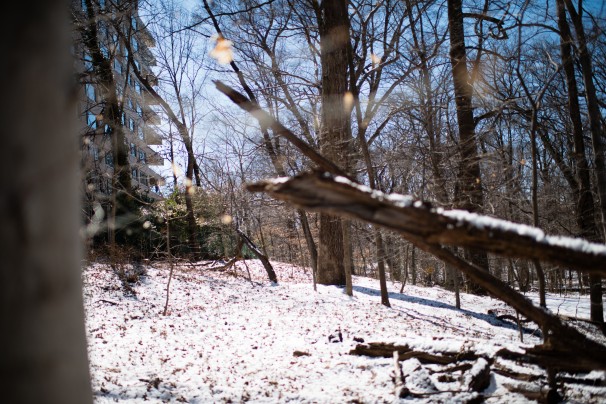
Some of the animals had been decapitated. Some still had their heads, but their throats had been slashed. Investigators believe they were killed elsewhere and dumped in the park.
"They were sacrificed and left there," said Scott Giacoppo, a vice president with the Washington Humane Society.
The carcasses were taken Wednesday to a laboratory in Virginia for necropsies. Veterinarians and investigators will look for clues that could point to a specific group or individual.
But what was done to the animals may not be a crime - if they were killed in a humane way.
"You have to do it in one fell swoop," Giacoppo said. "It has to cause instantaneous death. Anything short of that we can argue, is cruelty, and [we can] prosecute."
The animals were found Tuesday afternoon by a person walking along the path in a section of park in the 3500 block of 17th Street NW, near Piney Branch Parkway. The area sits behind a large apartment complex.
U.S. Park Police and Humane Society officials said the uniform way each of the chickens was killed has led investigators to believe that the killings were part of a ritualistic or religious practice. They believe that the animals were dumped along the path before snow started falling Tuesday morning.
That the deaths occurred elsewhere could hinder the case. Other parts of any ritual - food left near a head, for example - may have been left at the original site. The snow also may have washed away clues.
Giacoppo said investigators will look into whether the deaths were related to the religion of Santeria, which has West African and Caribbean ties.
Giacoppo said it isn't necessarily against the law to kill animals as long as it is done "humanely."
"Decapitation is considered humane," he said, if it is done with a "sharp instrument" and leads to "instantaneous death."
Luis Marin, who lives in Riverdale, Md., and has been involved with Santeria for 30 years, said true followers would not have left the dead animals in a park but would have buried them or more properly disposed of them. He said animal offerings are done as a "last-ditch resort."
"We try not to do it unless absolutely necessary," he said. He said examples include when someone is close to death or when a new priest is initiated.
He said the killings are not cruel.
"It is done in a very loving way," Marin said. "We give thanks for their contributions." Usually the animal is eaten after the offering, he said.
Giacoppo, of the Humane Society, said the District sees a couple of cases a year where animals are discovered that likely were sacrificed. In the current case, he said, investigators and veterinarians working with the society will be looking for specific wounds.
"We have no idea who did this," he said. "The likelihood is these cases just go cold. We just don't have evidence to figure out who did it. No one ever comes forward."
He said the deaths do not appear to be the work of anything demonic.
"If it was the occult, organs would be missing," Giacoppo said. "They would be eviscerated."



No other species on Earth, other than the human animal, kills other beings in order to curry favors from imagined, suppposedly all powerful sky beings. And even our laws say this is ok as long it's done quickly? Not much else could be as sickening.